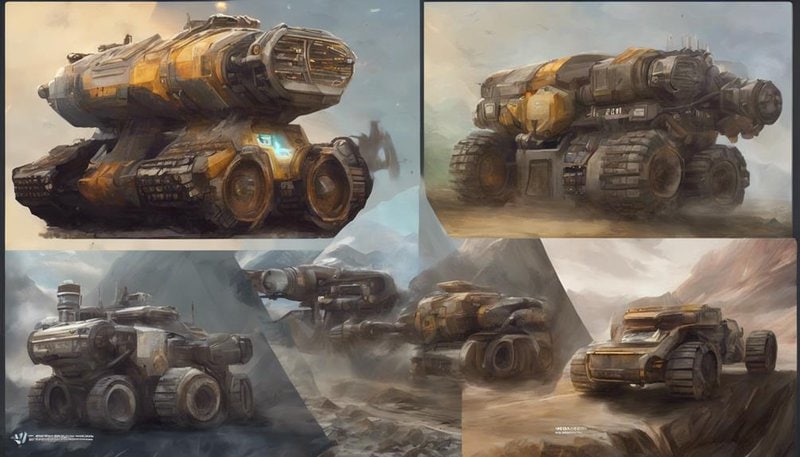What Is Token Standard? ERC-721 Vs. ERC-1155

ERC-721 vs. ERC-1155: A Comparison of Blockchain Token Standards.
Discover the differences in uniqueness and fungibility, and their impact on smart contracts and digital collectibles.
Key Takeaways
- ERC-721 tokens are non-fungible, while ERC-1155 tokens can be both fungible and non-fungible.
- ERC-1155 enables batch transfers for efficiency, unlike ERC-721 which ensures unique ownership validation.
- Interoperability and flexibility are crucial for token standards to adapt to market needs.
- Security considerations, innovation trends, and ownership models play key roles in token standard selection.
Overview of Token Standards
Have you ever wondered what sets token standards like ERC-721 and ERC-1155 apart from each other? The distinction lies in the concept of token fungibility. ERC-721 tokens are non-fungible, meaning each token is unique and not interchangeable with any other token. On the other hand, ERC-1155 tokens can be both fungible and non-fungible, allowing for a more flexible approach to token creation.
As the evolution of token standards continues, the adoption trends indicate a shift towards the versatility of ERC-1155. This standard offers the ability to create both fungible and non-fungible tokens within the same contract, providing a more efficient and cost-effective solution for developers.
Understanding the nuances between token fungibility and non-fungibility is crucial in selecting the appropriate token standard for your project. By staying informed about the evolving landscape of token standards and adoption trends, you can better serve your community by offering innovative and tailored solutions.
Understanding ERC-721 Basics
Delve into the foundational principles of ERC-721 token standard to grasp its significance in the realm of blockchain technology. Understanding ERC-721 involves recognizing the unique attributes that set it apart from other token standards. Here are three key points to aid your understanding:
- Token Uniqueness: ERC-721 tokens are non-fungible, meaning each token is distinct and can't be replaced by another. This uniqueness is crucial for representing assets like digital collectibles, real estate, or in-game items.
- Ownership Models: ERC-721 implements a clear ownership model where each token is owned by a specific address on the blockchain. This ownership structure enables verifiable ownership transfer, enhancing security and transparency.
- Immutable Records: The ERC-721 standard ensures that once a token is created, its existence and ownership history are permanently recorded on the blockchain, providing a transparent and tamper-proof ledger of ownership changes.
Exploring ERC-1155 Features

Embark on a journey through the intricacies of ERC-1155 token standard, unveiling its versatile features that revolutionize asset management on the blockchain. ERC-1155 brings a new level of efficiency and flexibility to the world of digital assets. One of its standout features is batch minting capabilities, allowing creators to mint multiple tokens at once, streamlining the process and reducing gas costs. Additionally, ERC-1155 supports customizable attributes, enabling token creators to tailor each asset with unique characteristics, enhancing their individuality and value.
Moreover, ERC-1155 goes beyond single-token standards by offering multi-token support. This feature allows a single contract to manage various types of tokens, simplifying the token ecosystem and providing a more cohesive experience for users. Another groundbreaking aspect is fractional ownership, where assets can be divided into smaller, tradable units. This feature opens up new possibilities for investors, allowing them to own a fraction of high-value assets, increasing accessibility and liquidity in the market.
With ERC-1155, asset management becomes more efficient and inclusive, catering to a wide range of needs in the blockchain space.
Comparison of Ownership Models
As you journey through the realm of token standards, consider the intricate dance of ownership models in ERC-721 and ERC-1155.
The transfer process in ownership, the unique identifiers of tokens, and the seamless interoperability and flexibility beckon your attention.
These elements intertwine to shape the landscape of token ownership in ways both fascinating and crucial.
Ownership Transfer Process
Comparing the ownership transfer processes between ERC-721 and ERC-1155 token standards reveals distinct models for transferring ownership of digital assets.
- Ownership Validation: In ERC-721, each token is a unique entity, making ownership validation straightforward as each token is individually identified.
- Transaction Efficiency: ERC-1155 allows batch transfers of multiple tokens in a single transaction, enhancing transaction efficiency compared to ERC-721, where each transfer is processed individually.
- Token Uniqueness: ERC-721 tokens are each distinct and unique, ensuring the authenticity and uniqueness of each asset being transferred.
Understanding these differences sheds light on the varying approaches to ownership transfer in the digital asset realm, offering insights into the strengths and efficiencies of each token standard.
Unique Token Identifiers
To further explore the nuances of ownership models in the realm of digital assets, consider the significance of unique token identifiers in distinguishing between ERC-721 and ERC-1155 token standards. Unique identifiers play a crucial role in determining token uniqueness within each standard. Below is a comparison table showcasing the differences in unique token identifiers between ERC-721 and ERC-1155:
| Aspect | ERC-721 | ERC-1155 |
|---|---|---|
| Token Identifiers | Each token has a unique identifier. | Multiple tokens can share an identifier. |
| Ownership Transfer | Individual token transfer required. | Batch transfer of multiple tokens. |
| Gas Efficiency | Less gas-efficient due to uniqueness. | More gas-efficient with shared IDs. |
Interoperability and Flexibility
Navigating the realm of digital assets, one must grasp the significance of interoperability and flexibility in comparing ownership models.
- Cross Chain Compatibility: Imagine tokens seamlessly moving across different blockchain networks, breaking barriers, and fostering a unified digital economy.
- Token Standard Evolution: Picture a dynamic landscape where token standards continuously adapt and improve, ensuring efficient transactions and enhanced functionalities.
- Ecosystem Integration: Envision a harmonious ecosystem where various tokens interact effortlessly, creating synergies and expanding possibilities for asset utilization.
In this ever-evolving space, the ability of token standards to achieve cross-chain compatibility and evolve with the market is pivotal. Embracing interoperability and flexibility not only enhances the user experience but also propels the token economy towards greater efficiency and innovation.
Smart Contracts and Interoperability
Now, let's explore the dynamic realm of smart contracts and interoperability. Smart contracts offer a plethora of benefits, revolutionizing how transactions are conducted.
However, navigating the complexities of interoperability presents its own set of challenges, demanding innovative solutions for seamless interactions between diverse token standards.
Smart Contract Benefits
Harnessing the power of smart contracts in token standards like ERC-721 and ERC-1155 can significantly enhance interoperability within blockchain ecosystems. When considering smart contract benefits in token standard implementation, think about:
- Automated Execution: Smart contracts enable automatic execution of predefined actions, ensuring trustless interactions between parties.
- Immutable Records: Transactions recorded on the blockchain through smart contracts are tamper-proof, providing a transparent and secure ledger.
- Cost Efficiency: By eliminating intermediaries, smart contracts reduce costs associated with traditional contract enforcement, streamlining processes for all involved parties.
Interoperability Challenges
Facing the challenge of ensuring seamless interaction between smart contracts across different blockchain networks requires a nuanced understanding of interoperability principles. Cross chain compatibility and token standardization are vital elements in overcoming these hurdles.
NFT interoperability presents a unique set of cross-platform challenges that demand innovative solutions. By standardizing token formats and implementing protocols that facilitate communication between diverse blockchain ecosystems, the potential for widespread adoption and utility of non-fungible tokens can be greatly enhanced.
Embracing interoperability not only fosters collaboration but also empowers users with the ability to seamlessly engage with a variety of digital assets across disparate networks. As the blockchain landscape continues to evolve, prioritizing interoperability will be key to unlocking the full potential of decentralized technologies.
Use Cases in NFT Ecosystem

Exploring the diverse use cases within the NFT ecosystem reveals the versatility and potential of token standards like ERC-721 and ERC-1155. Here are three compelling examples to illustrate the breadth of possibilities:
- Digital Art: Witness a revolution in the art world as NFTs enable artists to tokenize their creations, ensuring provenance and authenticity while expanding the reach of their work to a global audience.
- Gaming Industry: Dive into immersive virtual worlds where in-game assets are tokenized, allowing players true ownership of items and characters, fostering a new era of digital ownership and trading.
- Real Estate: Imagine a future where real estate deeds are represented as NFTs, simplifying property transactions, fractional ownership, and enhancing liquidity in the market.
These use case examples not only demonstrate the current market trends but also hint at the transformative power of NFTs across various industries. Explore further to uncover how these innovations are reshaping the way we perceive and interact with value in the digital realm.
Scalability and Gas Efficiency
When comparing ERC-721 and ERC-1155 token standards, it's crucial to consider scalability and gas efficiency.
Gas cost comparison, transaction speed impact, and proposed scalability solutions are key points that should be examined.
Gas Cost Comparison
In the realm of token standards, understanding the gas cost comparison between ERC-721 and ERC-1155 is paramount for assessing scalability and gas efficiency. When comparing the gas cost optimization of ERC-721 and ERC-1155, consider the following:
- Unique Token Transfers: ERC-721 tokens require more gas for individual transfers due to their unique nature, impacting gas efficiency differently from ERC-1155.
- Batch Transfers: ERC-1155 tokens excel in gas efficiency when conducting batch transfers, allowing for multiple tokens to be sent in a single transaction, thus optimizing gas costs.
- Smart Contract Deployments: While ERC-721 tokens may have higher gas costs during deployment due to their individual nature, ERC-1155 tokens can offer better scalability through more efficient contract deployment processes.
Transaction Speed Impact
To fully grasp the impact of transaction speed on scalability and gas efficiency between ERC-721 and ERC-1155 token standards, consider how their inherent design influences the speed at which transactions are processed. Network congestion can significantly affect transaction speeds, especially in the case of ERC-721 due to its individual token uniqueness, which can lead to slower processing times during peak network usage.
On the other hand, ERC-1155's ability to batch multiple tokens in a single transaction enhances blockchain scalability by reducing the number of transactions needed, thus potentially improving transaction speeds. Additionally, gas optimization plays a crucial role in transaction speed, as higher transaction fees can expedite confirmation times.
Understanding these nuances can help you navigate the complexities of token standards and make informed decisions.
Scalability Solutions Proposed
Explore innovative solutions to enhance scalability and gas efficiency within the realm of token standards, paving the way for smoother transaction processes and optimized blockchain performance.
- Layer 2 Solutions**: Imagine additional layers built atop the main blockchain, offloading significant transactional burdens and reducing congestion.
- Sharding Techniques: Picture the blockchain being divided into smaller, manageable shards, each processing a portion of the total transactions independently.
- Gas Optimization Strategies**: Envision smart contract optimizations and protocol upgrades that streamline gas usage, making transactions more cost-effective and efficient.
Security Considerations in Tokenization
Consider carefully the security implications when tokenizing assets to safeguard against potential vulnerabilities and threats. Security considerations are paramount when delving into token standardization to ensure the protection of digital assets. When tokenizing assets, it's crucial to implement robust security measures to prevent unauthorized access, fraud, and other cyber threats. Utilizing standardized protocols like ERC-721 or ERC-1155 can provide a foundation for security, but additional layers of protection may be necessary to fortify your tokenized assets.
In the realm of tokenization, security should be a top priority. Implementing encryption, multi-factor authentication, and secure smart contract development practices can bolster the security of your tokenized assets. Regular security audits and updates should also be conducted to stay ahead of potential vulnerabilities and emerging threats in the ever-evolving digital landscape.
Future Trends and Innovation

Embracing upcoming advancements and pioneering innovations is key to staying at the forefront of the evolving landscape of tokenization. As you look towards the future, consider these three trends that are set to shape the tokenization space:
- Blockchain Integration: The seamless integration of blockchain technology into tokenization processes is essential for enhancing security, transparency, and efficiency. By leveraging blockchain's decentralized nature, you can ensure trustless transactions and immutable records, revolutionizing the way assets are tokenized.
- Tokenization Strategies: Developing robust tokenization strategies is crucial for maximizing the potential of digital assets. From creating fungible tokens for currencies to unique non-fungible tokens for collectibles, exploring diverse tokenization approaches can open up new opportunities for asset representation and ownership.
- Interoperability Solutions: Future innovations will focus on creating interoperable token standards that facilitate seamless asset transfer across different platforms and ecosystems. By promoting compatibility and standardization, these solutions will enhance liquidity and accessibility in the tokenized asset market, driving further adoption and innovation.
Impact on Digital Collectibles Market
To grasp the significance of the present impact on the Digital Collectibles Market, envision a realm where token standards like ERC-721 and ERC-1155 are reshaping the landscape of asset ownership and digital representation. Market dynamics in the digital collectibles space have been greatly influenced by the introduction of these standards. With ERC-721, each token is unique, enhancing the rarity and value of digital assets. On the other hand, ERC-1155 allows for the creation of both fungible and non-fungible tokens, providing versatility for developers and users alike.
Competition within the digital collectibles market has intensified as these token standards have brought about a shift in user experience and engagement. Players now have more interactive and immersive experiences with their digital collectibles, driving higher engagement levels. The ability to own, trade, and showcase digital assets in a secure and decentralized manner has revolutionized how users perceive and interact with digital collectibles. As the market continues to evolve, the impact of token standards on user experience and engagement will be a key factor in shaping the future of digital collectibles.
Frequently Asked Questions
Can Tokens From Different Standards, Like ERC-721 and ERC-1155, Be Easily Exchanged or Traded With Each Other?
Tokens from different standards like ERC-721 and ERC-1155 can be exchanged or traded with each other, enhancing interoperability and market liquidity. Cross-standard compatibility allows for seamless transactions, increasing accessibility and diversity in the market.
How Do Token Standards Like ERC-721 and ERC-1155 Impact the Regulatory Landscape for Digital Collectibles?
In navigating the digital collectibles realm, understanding token standards like ERC-721 and ERC-1155 is crucial. These standards dictate the impact on market regulations and pose compliance challenges, urging careful consideration for seamless transactions.
Are There Any Known Vulnerabilities or Risks Associated With Using ERC-721 or ERC-1155 Tokens?
When utilizing ERC-721 or ERC-1155 tokens, it's crucial to assess risks and security implications. Ensure interoperability and adhere to token standards for a safer experience. Conduct thorough risk assessments to safeguard your digital assets.
What Are the Potential Challenges in Implementing Smart Contracts for ERC-721 and ERC-1155 Tokens?
When implementing smart contracts for ERC-721 and ERC-1155 tokens, you may encounter potential scalability issues related to high gas costs and Security concerns like vulnerabilities in the contract code. Ensure thorough testing and optimization.
How Do Token Standards Like ERC-721 and ERC-1155 Affect the Overall User Experience in the NFT Ecosystem?
In the NFT ecosystem, token standards like ERC-721 and ERC-1155 enhance user engagement and promote token interoperability. They also contribute to scalability and drive user adoption, making the overall experience more seamless and inclusive.









